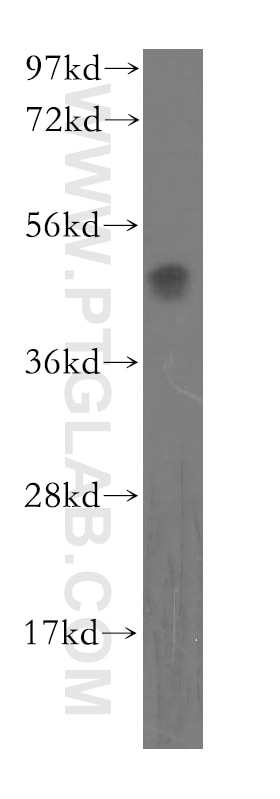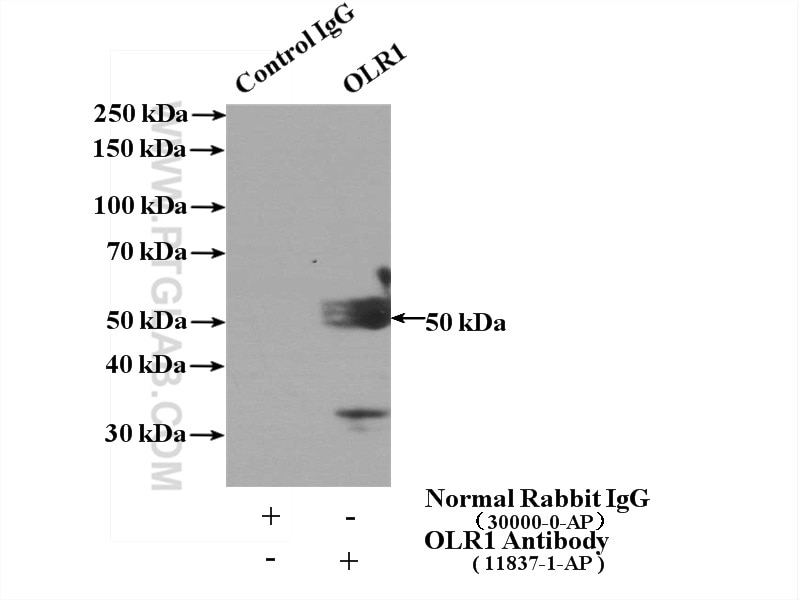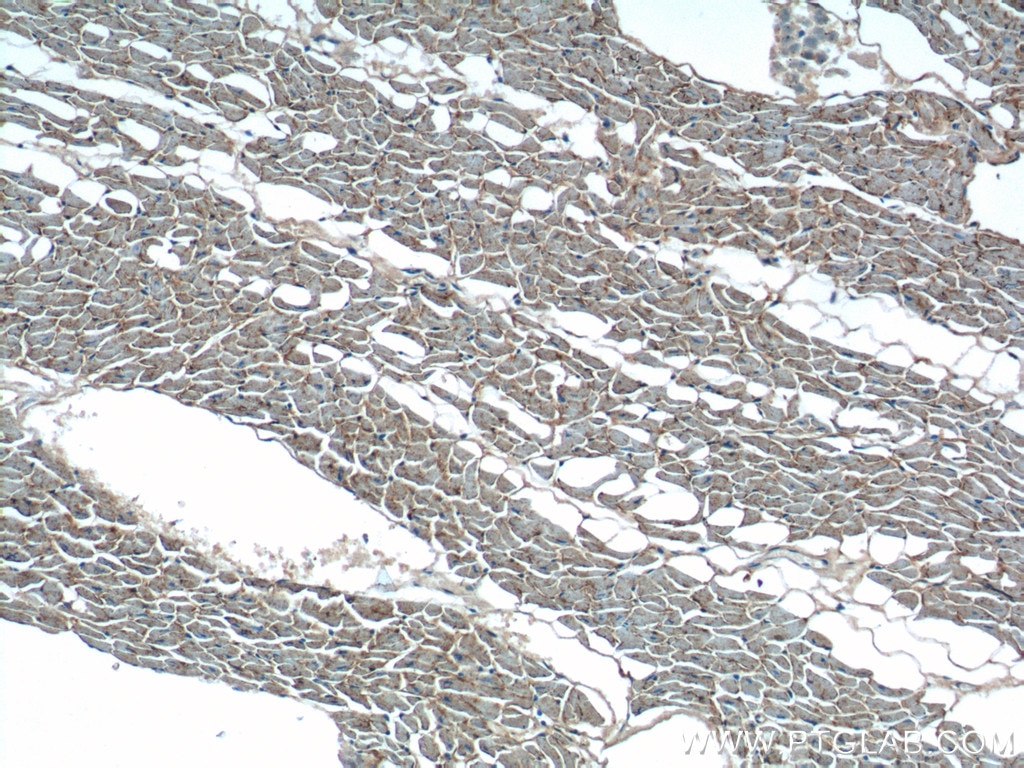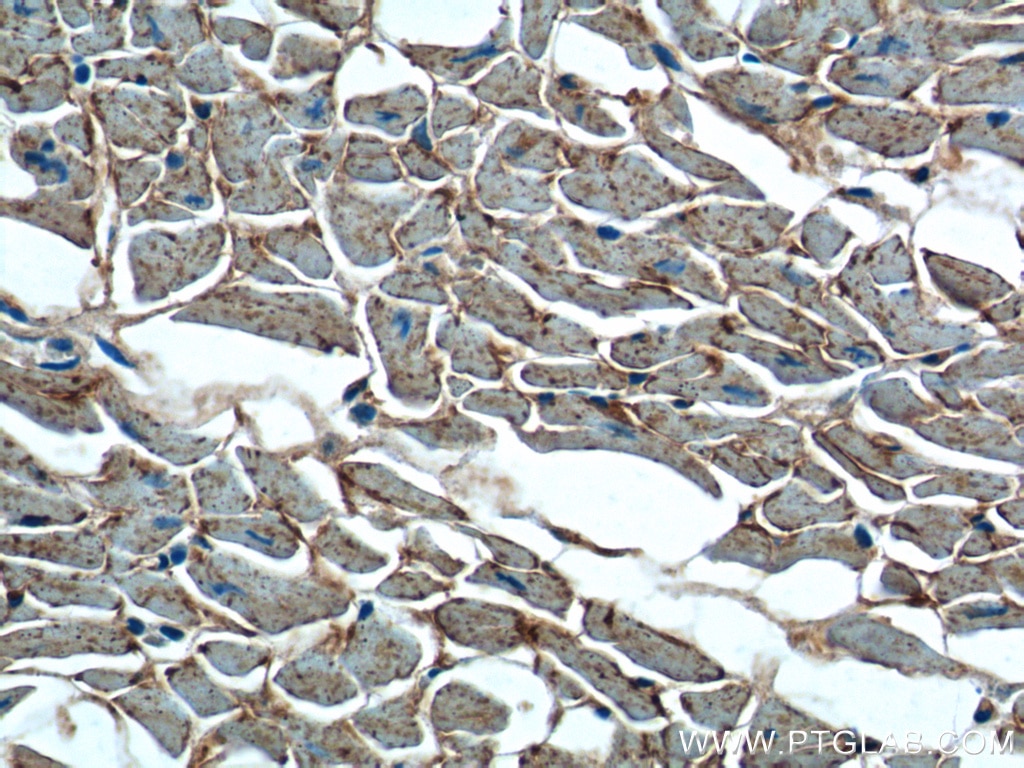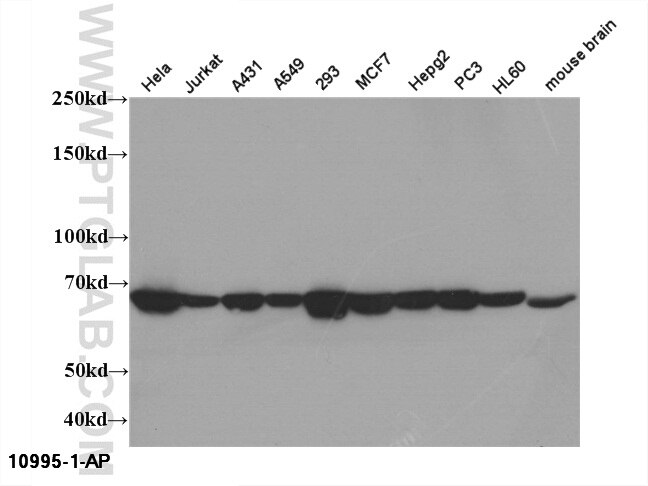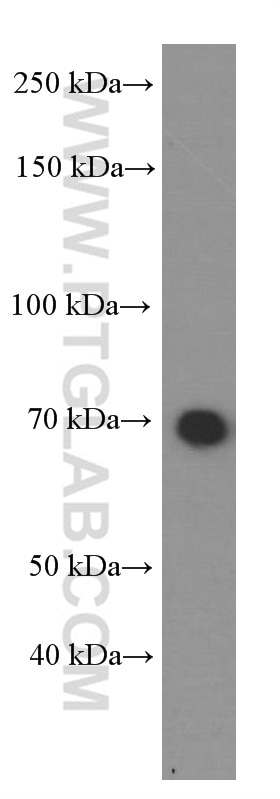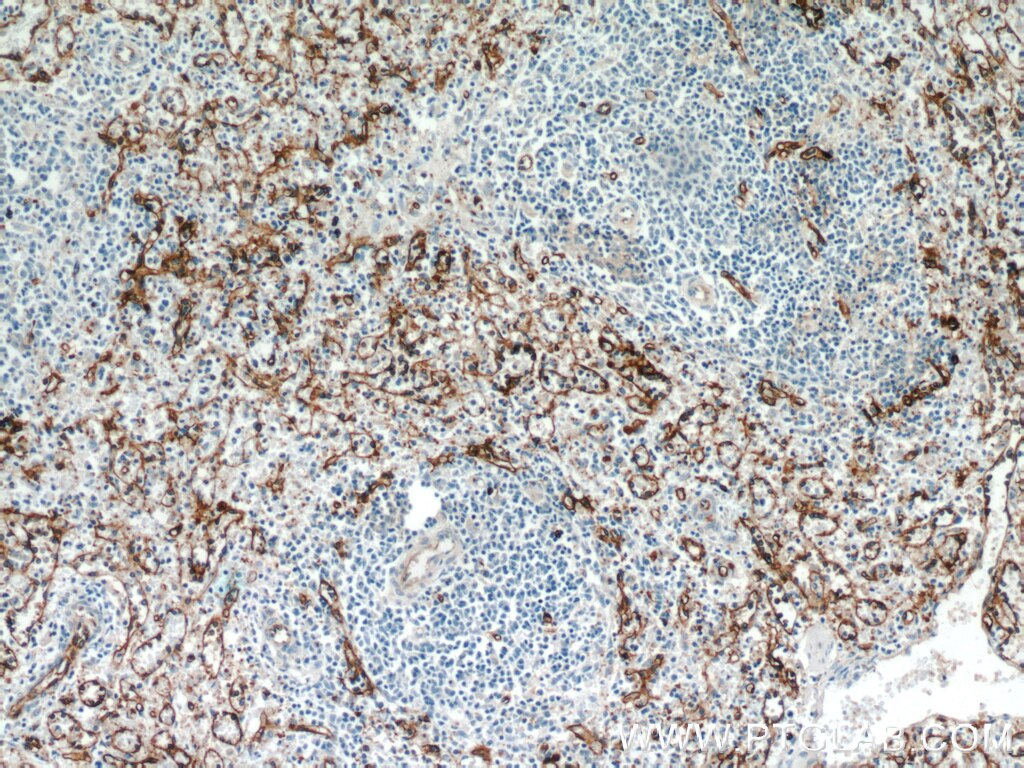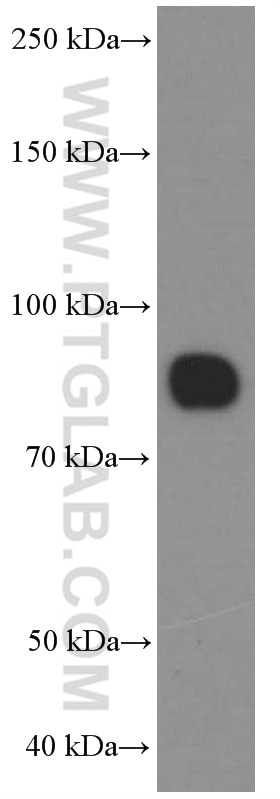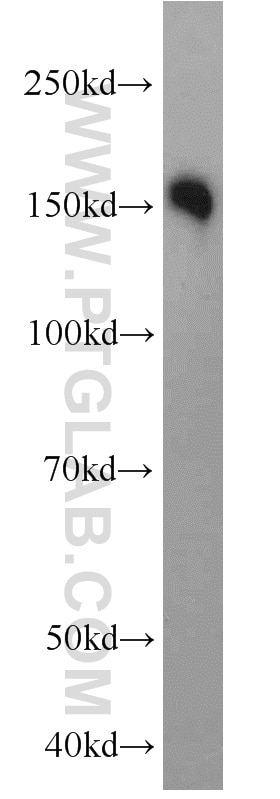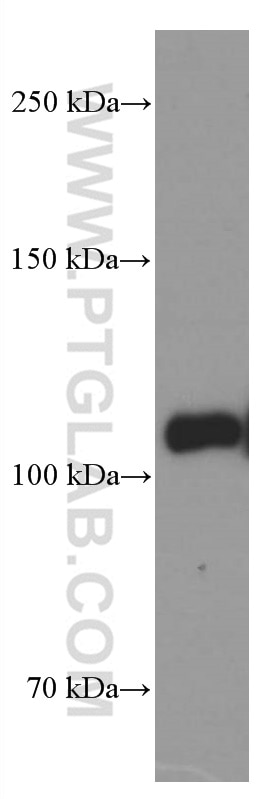- Featured Product
- KD/KO Validated
OLR1 Polyklonaler Antikörper
OLR1 Polyklonal Antikörper für WB, IP, IHC, ELISA
Wirt / Isotyp
Kaninchen / IgG
Getestete Reaktivität
human, Maus
Anwendung
WB, IHC, IF, IP, CoIP, ELISA
Konjugation
Unkonjugiert
Kat-Nr. : 11837-1-AP
Synonyme
Galerie der Validierungsdaten
Geprüfte Anwendungen
| Erfolgreiche Detektion in WB | bEnd.3-Zellen, humanes Lebergewebe |
| Erfolgreiche IP | L02-Zellen |
| Erfolgreiche Detektion in IHC | humanes Herzgewebe Hinweis: Antigendemaskierung mit TE-Puffer pH 9,0 empfohlen. (*) Wahlweise kann die Antigendemaskierung auch mit Citratpuffer pH 6,0 erfolgen. |
Empfohlene Verdünnung
| Anwendung | Verdünnung |
|---|---|
| Western Blot (WB) | WB : 1:1000-1:6000 |
| Immunpräzipitation (IP) | IP : 0.5-4.0 ug for 1.0-3.0 mg of total protein lysate |
| Immunhistochemie (IHC) | IHC : 1:50-1:500 |
| It is recommended that this reagent should be titrated in each testing system to obtain optimal results. | |
| Sample-dependent, check data in validation data gallery | |
Veröffentlichte Anwendungen
| KD/KO | See 4 publications below |
| WB | See 29 publications below |
| IHC | See 10 publications below |
| IF | See 6 publications below |
| CoIP | See 1 publications below |
Produktinformation
11837-1-AP bindet in WB, IHC, IF, IP, CoIP, ELISA OLR1 und zeigt Reaktivität mit human, Maus
| Getestete Reaktivität | human, Maus |
| In Publikationen genannte Reaktivität | human, Maus |
| Wirt / Isotyp | Kaninchen / IgG |
| Klonalität | Polyklonal |
| Typ | Antikörper |
| Immunogen | OLR1 fusion protein Ag2437 |
| Vollständiger Name | oxidized low density lipoprotein (lectin-like) receptor 1 |
| Berechnetes Molekulargewicht | 273 aa, 31 kDa |
| Beobachtetes Molekulargewicht | 50-55 kDa |
| GenBank-Zugangsnummer | BC022295 |
| Gene symbol | OLR1 |
| Gene ID (NCBI) | 4973 |
| Konjugation | Unkonjugiert |
| Form | Liquid |
| Reinigungsmethode | Antigen-Affinitätsreinigung |
| Lagerungspuffer | PBS mit 0.02% Natriumazid und 50% Glycerin pH 7.3. |
| Lagerungsbedingungen | Bei -20°C lagern. Nach dem Versand ein Jahr lang stabil Aliquotieren ist bei -20oC Lagerung nicht notwendig. 20ul Größen enthalten 0,1% BSA. |
Hintergrundinformationen
OLR1/LOX-1 acts as a receptor, in the form of homodimer, that mediates the recognition, internalization, and degradation of oxidatively modified low density lipoprotein (oxLDL) (PMID: 9052782, 15695803). ORL1 is predominantly expressed in endothelial cells and vascular-rich organs such as the placenta, lung, liver, and brain (PMID: 9828121). OLR1 is a protein containing 273 amino acids with a calculated molecular mass of 31 kDa but an apparent molecular mass of 50 kDa, which may result from the glycosylation of four potential N-linked glycosylation sites located at the C-terminal domain (PMID: 9052782).
Protokolle
| Produktspezifische Protokolle | |
|---|---|
| WB protocol for OLR1 antibody 11837-1-AP | Protokoll herunterladen |
| IHC protocol for OLR1 antibody 11837-1-AP | Protokoll herunterladen |
| IP protocol for OLR1 antibody 11837-1-AP | Protokoll herunterladen |
| Standard-Protokolle | |
|---|---|
| Klicken Sie hier, um unsere Standardprotokolle anzuzeigen |
Publikationen
| Species | Application | Title |
|---|---|---|
Free Radic Biol Med Up-regulation of thioredoxin system by puerarin inhibits lipid uptake in macrophages | ||
Cancer Lett Up-regulation of OLR1 expression by TBC1D3 through activation of TNFα/NF-κB pathway promotes the migration of human breast cancer cells.
| ||
Metabolism Deacetylation of Caveolin-1 by Sirt6 induces autophagy and retards high glucose-stimulated LDL transcytosis and atherosclerosis formation. | ||
Sci Rep Lectin-like oxidized low-density lipoprotein receptor-1 facilitates metastasis of gastric cancer through driving epithelial-mesenchymal transition and PI3K/Akt/GSK3β activation.
| ||
Int J Cancer The oxidized-LDL/LOX-1 axis in tumor endothelial cells enhances metastasis by recruiting neutrophils and cancer cells. | ||
Mol Cancer Res OLR1 Promotes Pancreatic Cancer Metastasis via Increased c-Myc Expression and Transcription of HMGA2.
|

